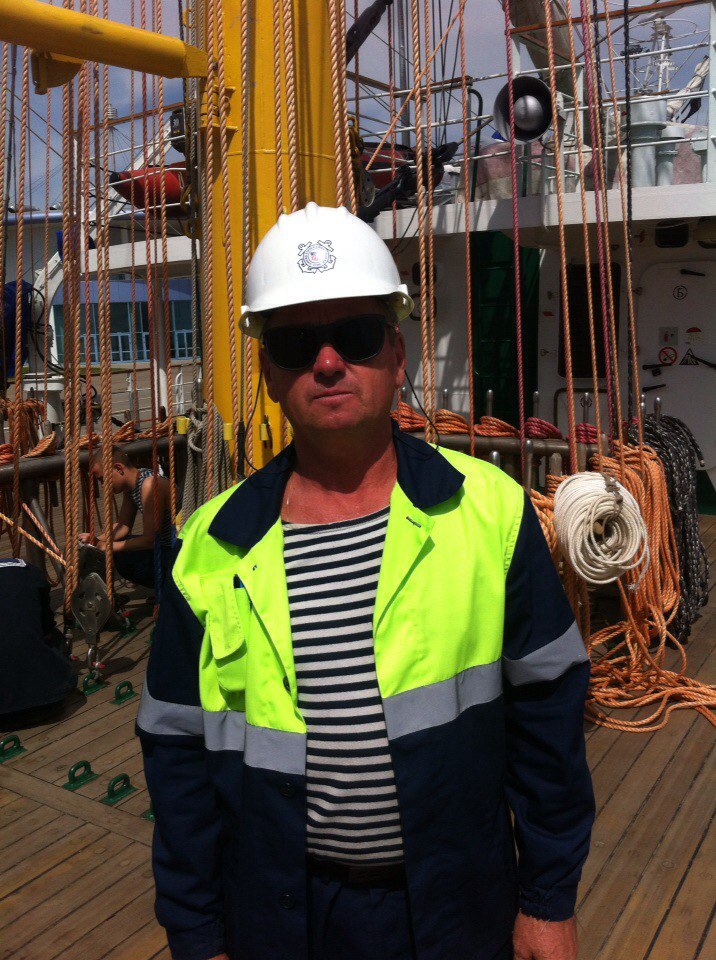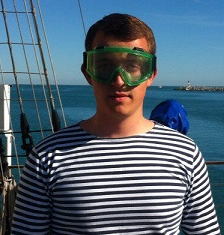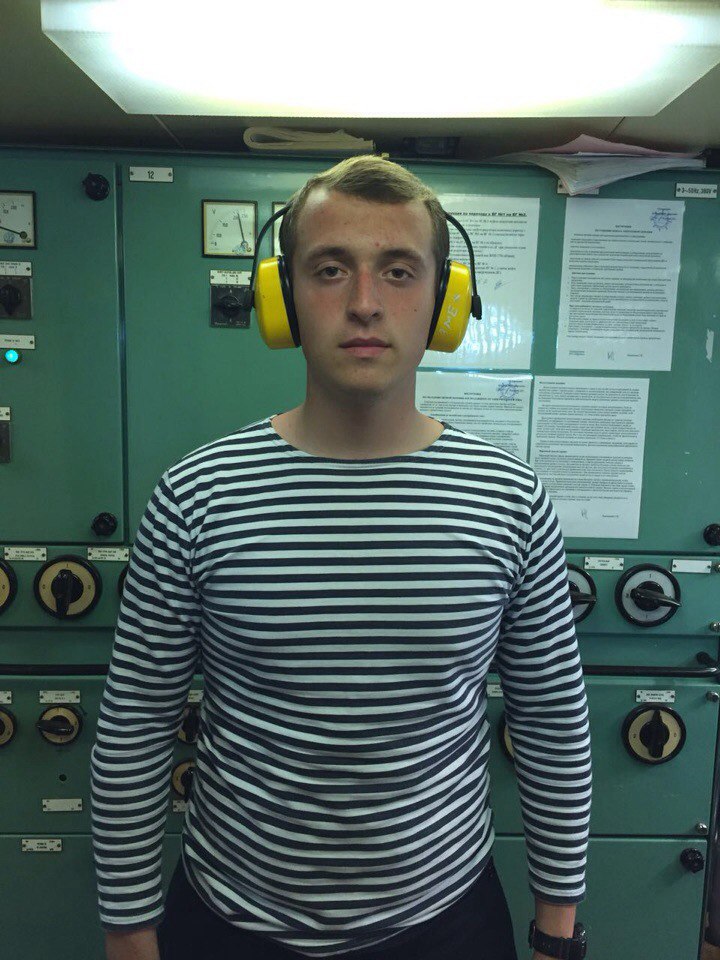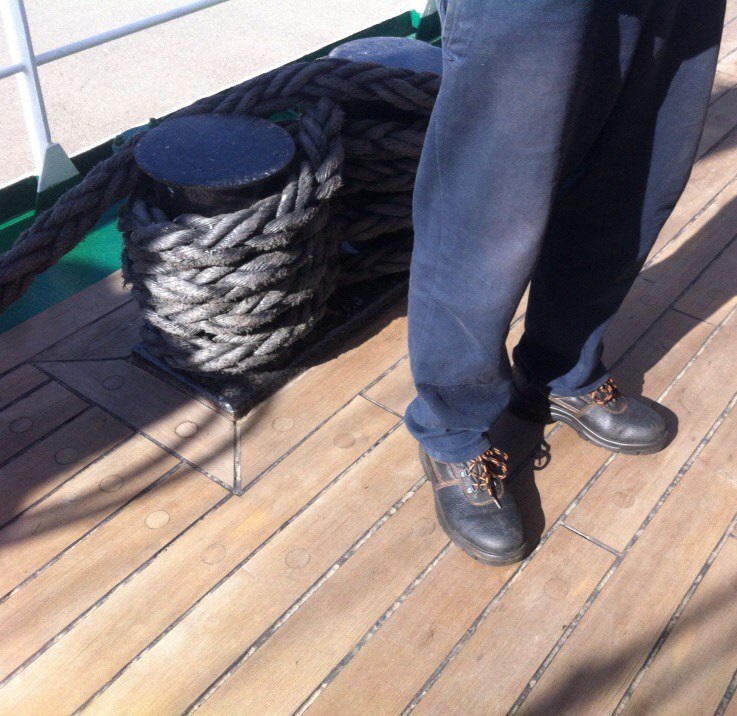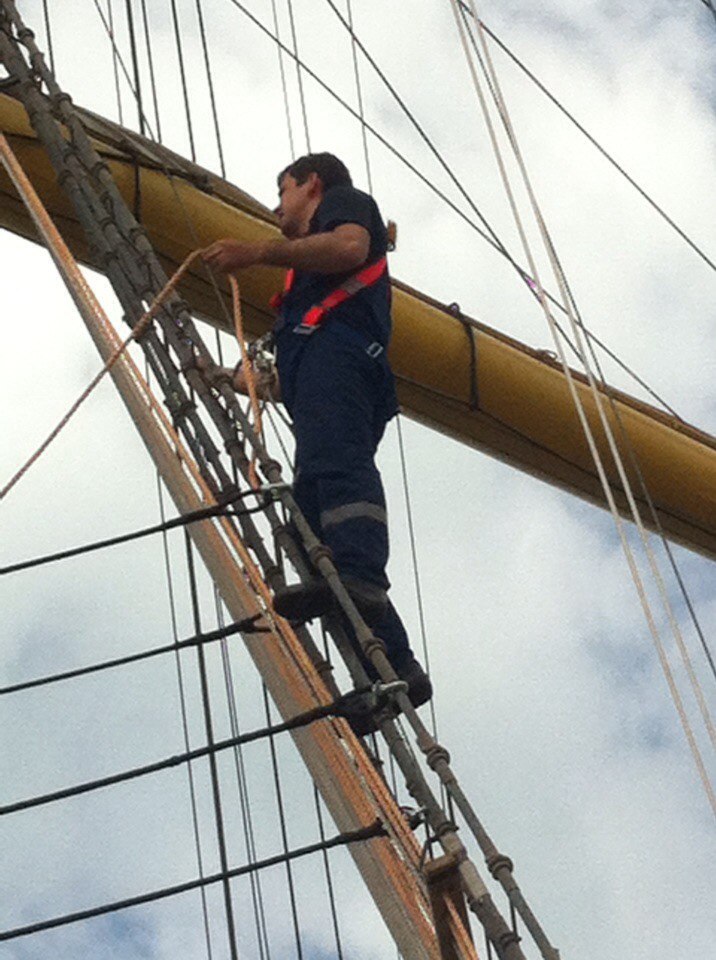- 05.09.2017
- 2679 Просмотров
- 0 Комментариев
Автор- Лищенко Андрей, курсант 134-С группы колледжа ИВТ им. Г.Я.Седова, г.Ростов-на-Дону
Руководитель -преподаватель английского языка Попова Ирина Леонидовна
Данная статья является результатом исследования соблюдения мер безопасности, использования персональных средств защиты и выполнения требований международных морских конвенций в области безопасности на борту судов торгового флота. Исследование производилось курсантом во время прохождения плавательной практики на парусном учебном судне "Херсонес". Работа выполнена на английском языке. Personal Safety on board
The aim of the research-work is to investigate the main types of personal safety equipment to be used on board ships; the rоle of this equipment in protection of human’s life. During my work I have tried to study the main maritime documents and conventions concerning this topic.
By far one of the first and most important steps towards personal safety on board ships is to be aware of your surroundings. Awareness of surrounding includes knowing your working space, risks and hazards present around you, and assessing the amount of efforts the job would require. This would allow to plan your job safely and efficiently. As a rule the most frequent tasks on board a ship always include dangerous procedures and using the equipment which requires thorough knowledge about it. It is always better to find out risk involved with the job before getting into it and minimize as many hazards as possible from you working place before carrying out your assigned job. Wear appropriate safety and protective clothing during work.
To achieve safety on board ship the basic step is to make sure that everybody wears their personal protective equipments made for different types of jobs carried out on ship. Every crew member gets the necessary personal protective equipment required for his job. Depending on position on board it can be: safety goggles, gloves, etc. It is the responsibility of all crew members to wear the proper personal protective equipment and to keep it in good condition.
Following are the basic personal protective equipment (PPE) that is always present on board a ship to ensure safety of the working crew:
Protective Clothing: Protective clothing protects the body of the crew member from hazardous substances like hot oil, water, welding spark etc. Use of chemicals on board ship is very frequent and some chemicals are very dangerous when they come in direct contact with human skin. To prevent direct contact with dangerous chemicals chemical suit should be worn.
Helmet: The most important part of the human body is the head. A hard hat is a type of helmet predominantly used in workplace environments such as industrial or maritime sites to protect the head from injury due to falling objects, impact with other objects, rain, and electric shock. Suspension bands inside the helmet spread the helmet’s weight and the force of any impact over the top of the head. Suspensions also provide space of approximately 30 mm between the helmet’s shell and the seaman’s head, so that if an object strikes the shell, the impact is less likely to be transmitted directly to the skull. Some helmet shells have a mid-line reinforcement ridge to improve impact resistance. The rock climbing helmet fulfills a very similar role in a different context and has a very similar design.
Safety Hand gloves. Seafarers sometimes suffer from cuts. They often cut their fingers when they are careless with sharp machinery. To prevent cuts, it is important to use safety guards and to wear gloves. Different types of hand gloves are provided on board ship. Some of the gloves provided are heat resistant gloves to work on hot surface, cotton gloves for normal operation, chemical gloves to work with chemical substances.
Safety Shoes. Maximum of the internal space of the ship is utilized by cargo and machinery, which is made of hard metal and which makes it clumsy for member’s feet while working or walking on board. So, the necessary requirements for protective shoes are that it should be fully closed and non-slippery. Seafarers sometimes break their arms and legs when they slip or fall. These accidents happened when safety boots or decks are wet and oily. Seafarers also fall when ladders are not secured. To prevent broken arms and legs, it is important to wear safety boots. Suitable safety shoes should be worn to protect toes from crushing. Sometimes safety shoes can be useful to take the load, when lowering, to allow hands to be withdrawn from underneath.
Face mask. Working on insulation surface, painting or carbon cleaning involves minor hazardous particles which are harmful for human body if inhaled directly.
Welding shield. Welding is a very common operation on board ship for structural repairs. A welder is provided with welding shield or mask which protects the eyes from coming in direct contact with ultraviolet rays of the spark
Protective goggles. Seafarers sometimes injure their eyes when they work with machinery. Dust sparks, and chemicals are very dangerous when they enter the eye. To prevent eye injuries, it is important to wear protective goggles.
Safety glasses are forms of protective eyewear that usually enclose or protect the area surrounding the eye in order to prevent particulates, water or chemicals from striking the eyes. They are used in chemistry.
Ear Muffs/plugs. Engine room of a ship produces 110-120 db of sound which is very high for human ears. Even few minutes of exposure can lead to head ache, and sometimes partial or full hearing loss. An ear muff or ear plug is used on board ship which dampens the noise to a bearable decibel value.
Safety harness. Safety harness is a form of protective equipment designed to protect a person from injury or damage. Routine ship operation includes maintenance and painting of high and elevated surfaces which require crew members to reach areas that are not easily accessible. To avoid a fall from such heightened area, safety harness is used. The harness is an attachment between a stationary and non-stationary object and is usually made from rope, cable or webbing and locking hardware. On board tall ships safety harnesses are used to protect cadets from falling a great distance onto a hard deck.
United Nation’s International Maritime Organization (IMO) plays an important role in handling all international maritime affairs with support from the maritime nations of the world. One of the most important instruments of IMO are conventions.
Of all international conventions dealing with personal and maritime safety, the most important is the International Convention for Safety of Life at sea (SOLAS).
The main objective of the SOLAS convention is to specify minimum standards for the construction, equipment, and operation of ships compatible with their safety.
Control provisions also allow Contracting Governments to inspect ships of other Contracting States if there are clear grounds for believing that the ship and its equipment do not comply with the requirements of the Convention. This procedure is known as Port State Control.
Chapter IX makes mandatory International Safety Management (ISM) Code which requires a ship-owner to establish a safety management system.
ISM is International Safety Management Code for the Safe Operation of Ships and for Pollution.
Statistics say that about 80% of all shipping accidents are caused by people. Objectives of the ISM Code are to ensure safety at sea, prevention of human injury or loss of life and avoidance of damage to the environment, especially to the marine environment and to property.
The ISM Code establishes an international standard for the safe management and operation of hips - Safety Management System (SMS).
The ISM Code requires the company to develop plans and procedures for all special and critical operation on board. Before carrying out any task onboard, crewmembers have to check in the SMS if the is any written procedure or plan describing how to do it. If so, they have to follow that plan. In order to avoid accidents and eliminate the risk of fire and explosion onboard it is necessary to plan the work and follow all work permits before any work starts.
Required work permits include:
HOT WORK PERMIT should be issued, when involving risks such as fire, explosions. Example of work: welding, cutting. All hot work must be reported to the officer before start.
ENCLOSED SPACE ENTRY PERMIT should be issued, when involving risks like: lack of oxygen, dangerous gases. Example of such work: tank cleaning, tank inspection. An enclosed space includes tanks (cargo, ballast, fuel, water, lube oil, sewage), cofferdams, pump-rooms, as well as any trunk ways, pipelines, or fittings connected to them, and any other items of machinery or equipment which are not regularly ventilated and entered.
As real life practice shows the depletion of oxygen in enclosed space might be very dangerous for human’s life. This is the true story from real life: A barge was to be used to store sand, cement and bentonite at construction site. Prior to being loaded, an inspection of the barge took place. It was required to undertake periodical checks of the hull to control water accumulation. A worker was asked to enter the hull and perform the first inspection.
Unfortunately, as a result of intensive corrosion processes, a significant decrease of oxygen concentration inside the barge had occurred. The man who entered the barge hull was almost suffocated from lack of oxygen. Only the curiosity of fellow worker instigated a search and he was rescued. Even hours after the accident, oxygen concentration inside the hull of the barge was still less than the required minimum. When corrosion displaces the oxygen, there is a danger of asphyxiation.
Unconsciousness or death may result very rapidly when there is little or no oxygen, and there is no warning effect. Confined spaces where there may be ventilated before entering, that air tested and breathing apparatus worn.
Such accidents must be prevented through providing workers with a proper air measurement device. Breathing equipment must also be available for rescue operations. Normal gas masks give no protection against oxygen deficiency. Workers must be properly warned of the danger.
ELECTRICAL WORK PERMIT should be issued, when involving risks like: electrical shock. Example of such work: replacing electrical fittings.
WORKING ALOFT PERMIT should be issued, when involving risks like: failing down. Example of such work: replacing navigation lights; any work done so high up that seaman risks to heart himself if fails.
UNDERWATER WORK PERMIT should be issued, when involving risks like: a diver may be injured by a propeller. Example of such work: diving.
WORKING OUTBOARD PERMIT should be issued, when involving risks like: failing into the sea. Example of such work: fixing a pilot ladder; any work outside the ship's hull.
COLD WORK PERMIT should be issued, when involving risks like: explosions. Example of such work: rust chipping, all work with power tools outside the engine-room.
WORK HOURS
Personal should have a proper rest before taking over the watch. All watch keepers must receive no less than 10 hours of rest in each 24 hour period.
Conclusion: from all the above we can see that personal safety on board is the most important task for seafarers and ship’s owners. Every crew member should do everything possible to ensure personal safety on board.
Никто не решился оставить свой комментарий.
Будь-те первым, поделитесь мнением с остальными.
Будь-те первым, поделитесь мнением с остальными.

